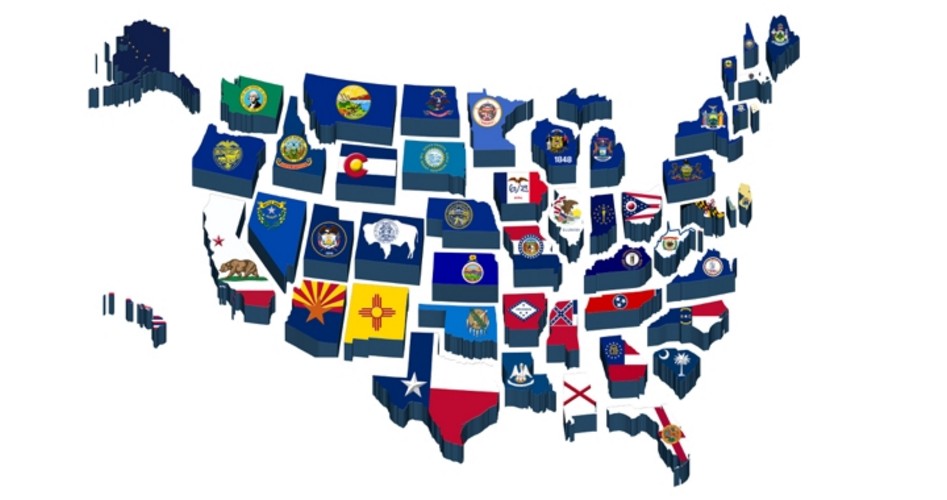What is Federalism?
We all know that our national government — the one headquartered in Washington, D.C. — is called the “federal government.” The word “federal,” as well as its equivalent in other languages, is also used to describe certain other national governments, such as Mexico’s, and words such as “federation” and “confederacy” are evidently related to it. But what does the term “federal” mean?
The word comes from the Latin foedus, meaning “covenant,” and denotes a form of government that, if not wholly invented by America’s Founders, was certainly perfected by them and applied to the governance of a much larger territory than anyone else had ever managed. The proper name for the methodology of creating and sustaining a “federal” government is “federalism.” And many historians and students of political philosophy believe federalism to be among the greatest of all the American Founders’ contributions to civilization.
When the Founders first won independence from the British Empire, they drafted a document known as the “Articles of Confederation,” America’s first national constitution. The former 13 colonies, having fought together in the war for independence despite being technically separate, now wished to create a bare-bones national government that would unite them in a loose confederation — that is, a union of mostly independent states wishing to enjoy some of the advantages of political union while maintaining most of their independence. Early America was not the first such confederation; the country of Switzerland had existed (and continues to exist) as a federation among separate so-called cantons speaking four different languages and possessing very different cultures for several centuries before the American founding. And Canada, founded almost a hundred years after the United States and consisting of two major ethnic groups speaking different languages (English and French), also refers to itself as a confederation.
For a variety of reasons, the American Founders came to believe that a more robust arrangement than loose confederation was needed. Because of this, the Constitutional Convention of 1787 in Philadelphia was convened by representatives from 12 of the original 13 states. (Rhode Island did not participate.) After nearly four months of discussion and sometimes acrimonious debate, the final draft of a new U.S. Constitution contemplating a stronger national government than the Articles of Confederation had countenanced was signed and submitted to the governments of the 13 states for ratification.
This entire process, including ratification, had been undertaken by the separate states. They in effect created a national government that, in most respects, was inferior in authority to the states. Those powers delegated to the national government that the states agreed to renounce, such as the power to form treaties with foreign governments, were understood to have resided with the states as well until delegated to the newly formed federal government. The covenant implied by the term “federal” was among the formerly independent states to delegate some of their powers to an agreed-upon central authority. This covenant also bound the federal government to respect the limits on its powers clearly spelled out in the Constitution, and to otherwise defer to the states or to the people — as the 10th Amendment makes explicit.
The federal government, in other words, exists entirely by the license of the states, and its powers are derived from theirs, and not the reverse. This was (and remains) in stark contrast with most other national governments, wherein states, provinces, departments, oblasts, or other political subdivisions are created by a pre-existing strong central government. There was, for example, no interest in federalism in the founding of each of modern France’s successive revolutionary republics; the government in Paris merely divided French territory into administrative units known as departments, mostly for bureaucratic convenience. Many of Russia’s oblasts date all the way back to the czars, and the remainder were created during the Soviet period. On the other hand, some modern states, such as Mexico, India, and Argentina, are divided into states or provinces with significant autonomy, but in none of these did the national government arise as a consequence of a pact among previously independent state governments.
The intent of the Founders was that the federal government, formed by a covenant among the states, would be primarily their servant and not their master, and that it would likewise serve the people. The division of powers among the states, and between the state and federal governments, would make it much more difficult for would-be tyrants to subvert these aims and to grind the people down as in an Old World autocracy. But the history of the United States since the very early 19th century, only a few decades after its founding, has seen a steady migration of power from the states and the people into the federal government. In a wide array of concerns — from education to public lands to the regulation of food to marriage — the federal government is making itself the supreme authority, while converting the states into mere geographical administrative units expected to implement federal laws, regulations, and rulings, regardless of whether those laws, regulations, and rulings are constitutional. In this way, the doctrine and practice of federalism is being turned on its head.
Much of this has taken place, not because the states have permitted the federal government to wrest existing legal authority from the states (although this has taken place, particularly under the pretext of equal rights), but because the federal government has been allowed to usurp power where none has been enumerated in the Constitution — and then claim that states are subordinate in the exercise of such powers.
In our day, the system of federalism has been all but abandoned. Most Americans believe that all government authority comes from Washington, trickling down by the consent of elected national rulers to state and local governments. We will not be able to restore constitutional government without first restoring federalism.



